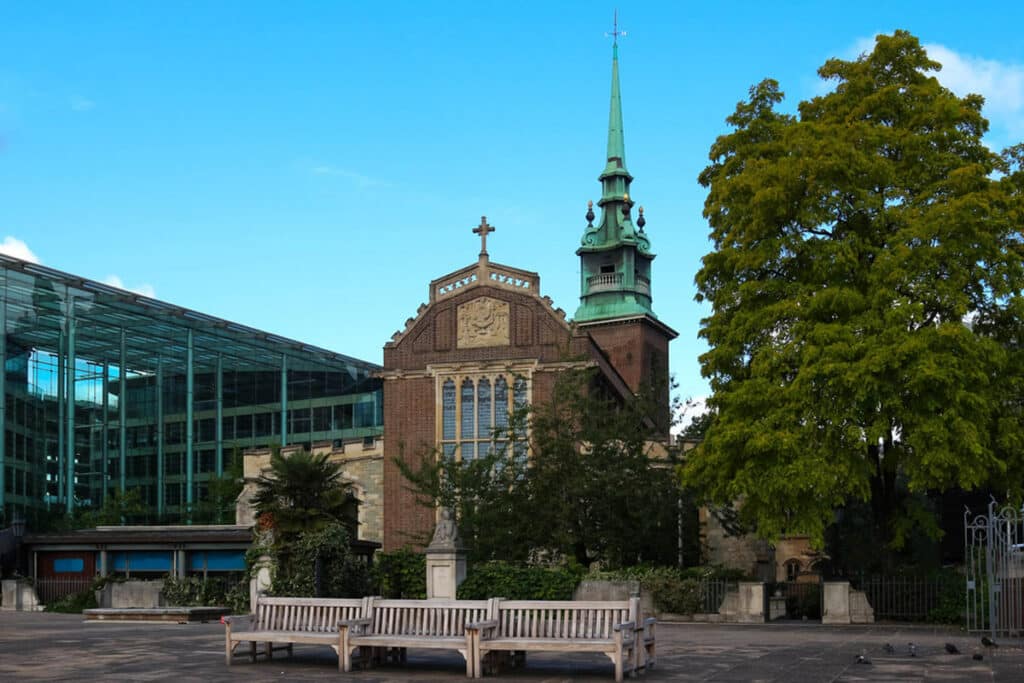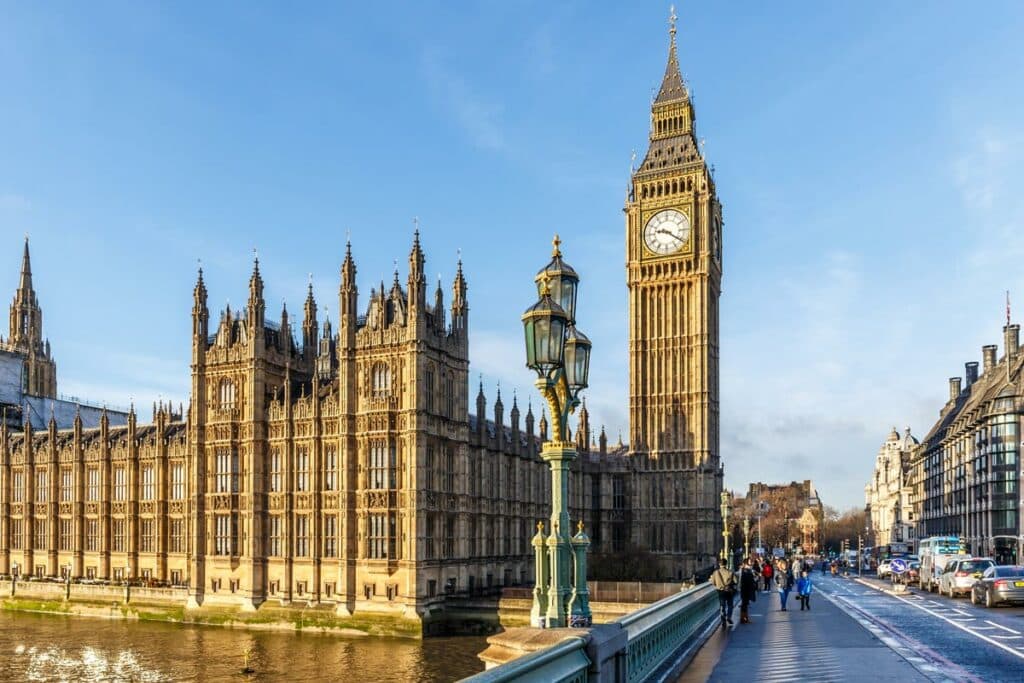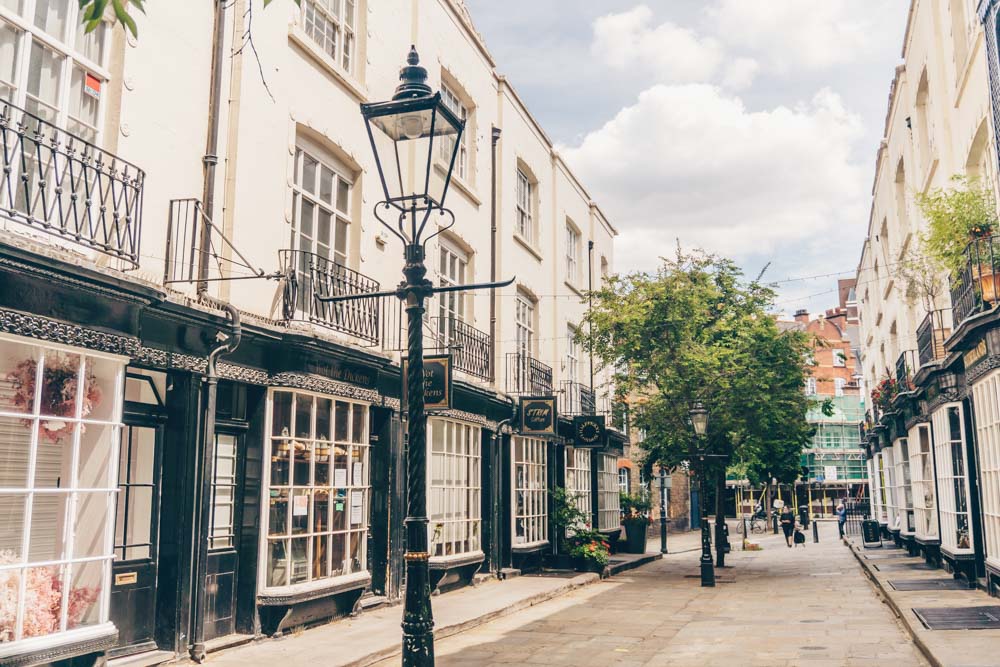Situated just moments from the Tower of London, All Hallows by the Tower is London’s oldest surviving church. Here’s what you need to know about its fascinating history.
Words by Sam Jean
From the outside, you’d be forgiven for thinking that All Hallows by the Tower is a pretty straightforward church.
However, London is brimming with hidden historical quirks, and once you dig deeper into its vaults, All Hallows has an abundance of treasures to investigate.
There are a few secrets hidden, quite literally, beneath this wonderful church. Let’s explore.
Why Visit All Hallows by the Tower?
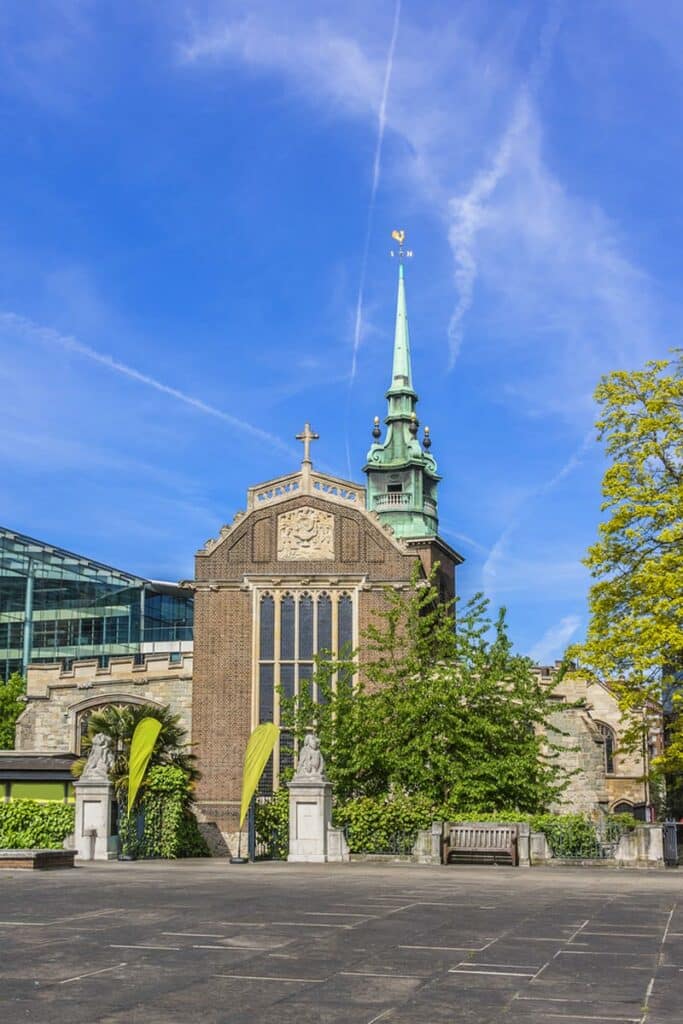
All Hallows, meaning All Saints, is one of London’s oldest surviving churches, if not the oldest. It’s a chimaera of historic architecture, a former Saxon abbey built on top of ancient Roman buildings.
New structures and parts were added to the church in the 12th, 13th, 14th, 15th, 17th and 19th centuries, resulting in a somewhat chaotic architectural style with walls and floors that flow into each other across the ages.
Much of the existing church was painstakingly restored after being destroyed during the Blitz, but there are plenty of clues to its ancient history.
Ancient Architecture Through the Ages
All Hallows by the Tower features some of the oldest architecture in London. In the crypt below the church, you’ll find an Anglo-Saxon arch and Roman pavement dating back to the 3rd and 7th centuries.
An ensemble of historical and architectural features was added through the ages, including Roman, Anglo-Saxon, Crusader, 16th, 17th and 19th-century features. Some notable ancient artefacts include Roman headstones with beautiful inscriptions and Saxon crosses found at the site.
For anyone who loves to explore old London, All Hallows is a must. Mainly for its diverse and eclectic selection of ancient objects and relics for you to peruse on a quiet or rainy day.
Crypt Museum
The All Hallows by the Tower Crypt Museum features an intriguing collection of Roman and Saxon artefacts, an original Roman tessellated floor from a 2nd or 3rd-century Roman domestic house, and ancient documents dating back to the 16th century.
Though one of the coolest artefacts is a barrel used as a crow’s nest on the mast of Shackleton’s ship, Quest, which travelled to Antarctica in 1921 – 1922.
The barrel was waved off on a celebratory journey to commemorate the Antarctic expedition, ‘Shackleton’s Last Quest’.
It’s actually on loan right now from the South Georgia Museum. So, depending on when you’re reading this, the barrel may or may not have returned home from its epic journey. But fingers crossed you get to see it!
Memorials and Iconography in the Church
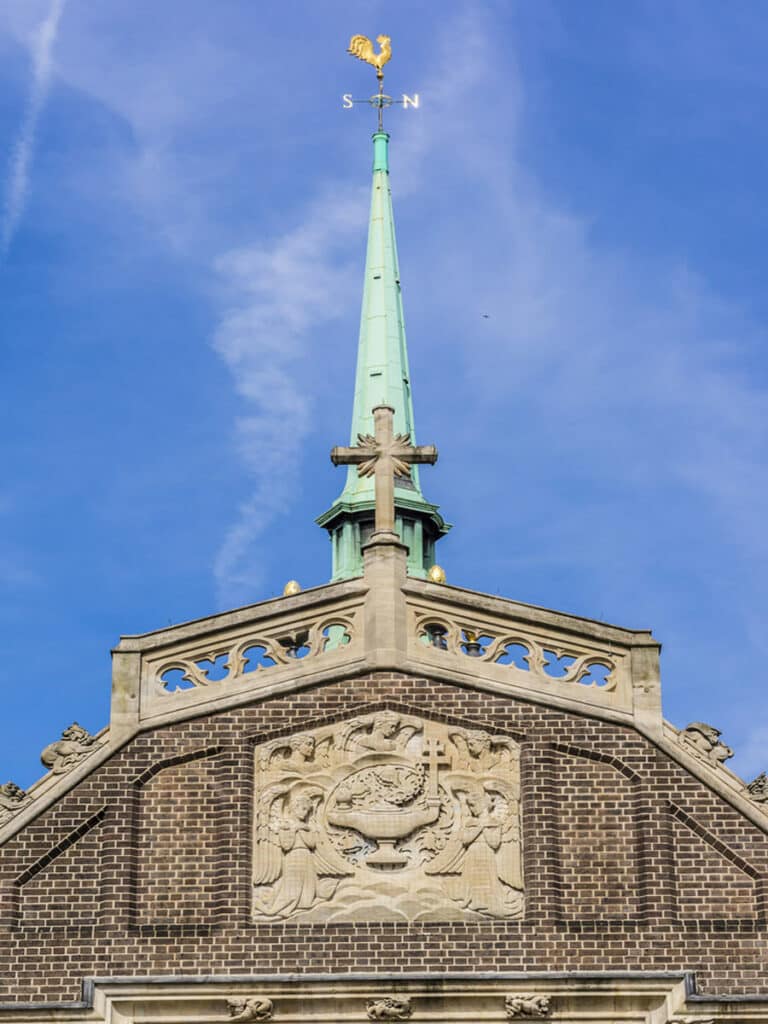
The church itself bears naval and nautical iconography due to its proximity to the Thames and former neighbouring naval ports. It even has a Mariners’ Chapel with an altar dedicated to “all seafarers who are in danger or distress”.
All Hallows by the Tower London features numerous models of ships, including the Cutty Sark, and memorials to naval disasters, including the sinking of HMS Hood in the Battle of the Denmark Strait (1941), which saw the demise of 1,418 crew members.
Beating the Bounds
Stick with us here. If you’re interested in eccentric British traditions, you’ll love witnessing the annual ceremony of Beating the Bounds.
Beating the Bounds dates back to medieval times when parishes affirmed their boundaries with others by quite literally beating the boundaries with sticks.
The parish boundary runs through the Thames at All Hallows, so the clerical beating party and students from nearby St. Dunstan’s College sail out onto the river to beat the water itself – a bizarre sight for bystanders that don’t know what’s going on.
Every third year, there’s a ceremonial ‘battle’ where the Governor and Yeomen Warders of HM Tower of London battle the clergy at the boundary between the Tower of London and the church.
Today, the ceremony is still very much an enthusiastic ordeal, and you can read more about it on the All Hallows website. The battle takes place each year on 26th May and is a must-see if you’re a fan of quirky British tradition.
The Font Cover
A church font is a vessel used for baptism ceremonies. Though the font cover at All Hallows is particularly beautiful, sculpted from limewood by Anglo-Dutch sculptor Grinling Gibbons.
The font itself is carved from limestone by a Sicilian prisoner-of-war called Tulipani.
All Hallows by the Tower Cafe
Next door to All Hallows is the spacious and bright Byward Kitchen & Bar, a modern cafe restaurant for breakfast, lunch, tea and cake.
Tuck into a Full English breakfast, pasta, fish and chips or delicious fresh waffles before heading out to All Hallows and the Tower of London.
This highly-rated kitchen bar is a fresh and comfortable escape from one of London’s busiest areas and well worth visiting for drinks, snacks or lunch when you’re in the area.
The History of All Hallows By The Tower
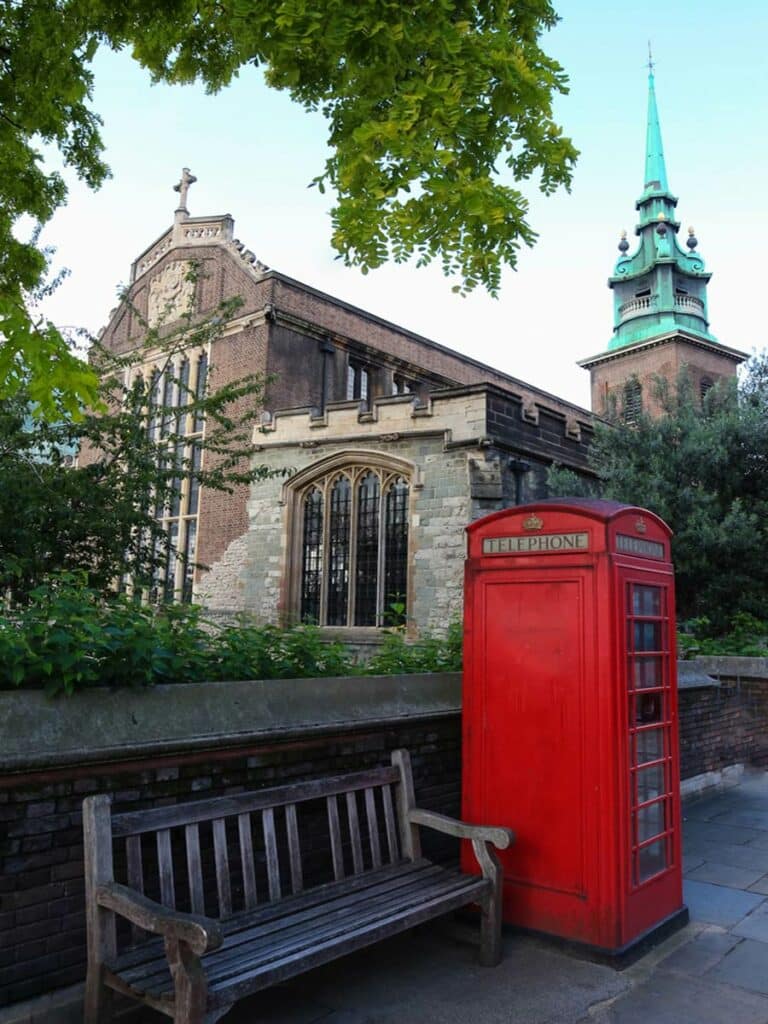
It goes without saying that All Hallows-by-the-Tower is exceptionally old. It was founded by a nunnery named the Abbey of Barking in 675.
This was when the Romans had abandoned Londinium, and Anglo-Saxon London slowly emerged from the rubble.
Roman and Saxon Origins
The precise origins of the church remain debated. Historians attempted to piece together accounts of the church’s origins from old documents, including the Domesday Book.
The current church site possibly originated from the original Anglo-Saxon abbey of Barking, founded by the Bishop of London Earconwald. A charter possibly granted to Earconwald’s sister lists the church (then an abbey) as the Abbey of Barking.
The church’s origins were relatively unknown until 1940, when the site was bombed, and the subsequent clearance revealed a Saxon archway built of reused Roman materials.
This came as a surprise, and by comparing similar arches in other Anglo-Saxon churches, experts suggested that the All Hallows arch was very old. In the crypt, there’s a Roman pathway – rare surviving evidence of London life almost 2000 years ago.
All Hallows’ Bloody, Fiery and Explosive History
All Hallows has seen and survived many of London’s turbulent historical events.
Due to its proximity to the Tower of London, All Hallows was used as a temporal burial site for several high-profile execution victims, including Bishop Fisher (1535), Archbishop Laud (1645) and Sir Thomas More (1535).
Then, a gunpowder explosion in 1650 destroyed the west tower and some 50 adjacent houses.
Not too long after, in 1666, the Great Fire of London came perilously close to claiming the church before Admiral William Penn ordered his men from a naval yard to blow up adjacent buildings to prevent the fire from spreading to the church.
The diarist Samuel Pepys scaled the church tower to witness the fire, describing it as “the saddest sight of desolation”.
The Present Day
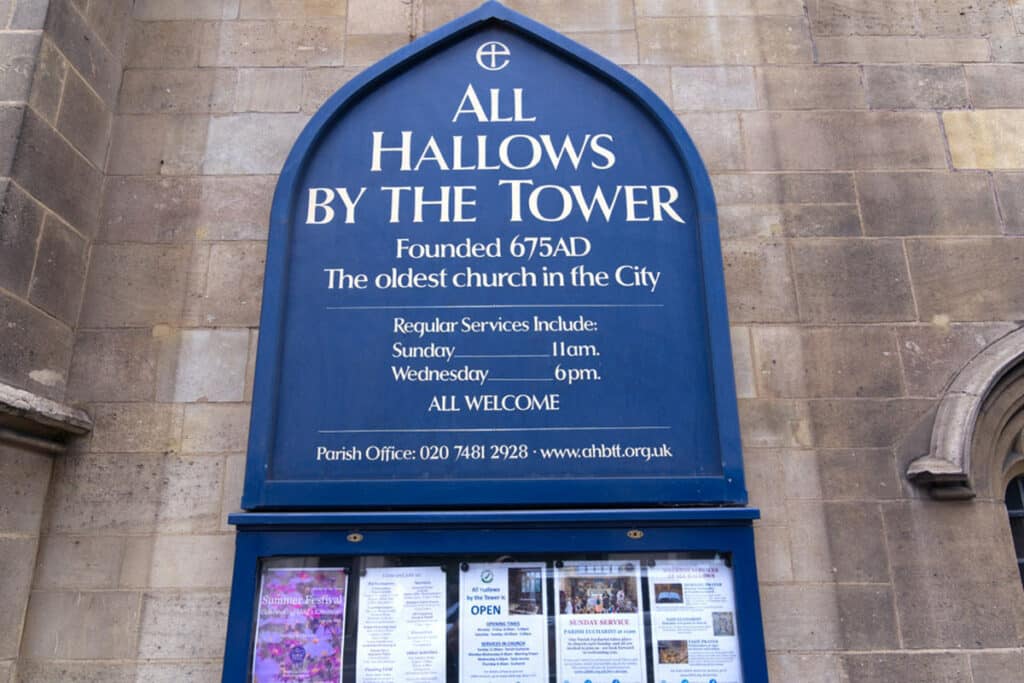
All Hallows by the Tower’s history spans over 2000 years. The church has seen both famous marriages and executions, most notably John Quincy Adams, the sixth US president. In fact, he remains the only US president to be married off American soil.
After surviving the 15th and 16th centuries, All Hallows couldn’t escape the Blitz and was destroyed by German bombers. Molten lead dripped through its foundations and can still be seen in the church today. The church was faithfully reconstructed and rededicated in 1957.
In 1999, the cemetery was excavated by archaeologists, leading to many important discoveries of Roman and Saxon coins, jewellery and metalwork.
Today, All Hallows by the Tower church hosts Anglican Christian events and services, as well as organ recitals and educational events for schools.
All-Hallows-by-the-Tower: Practical Information
Address: All Hallows by Tower Church, Byward St, London EC3R 5BJ
Opening Times: 8am – 5pm
Tickets: Free

